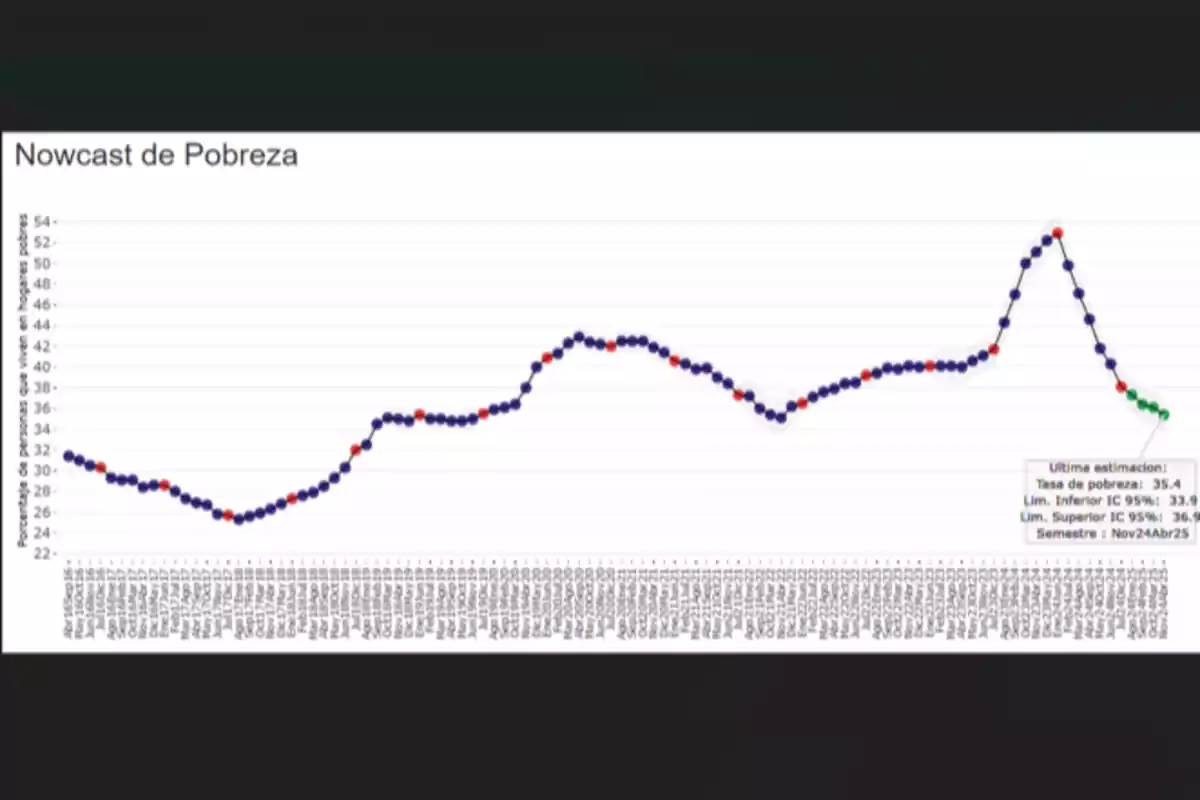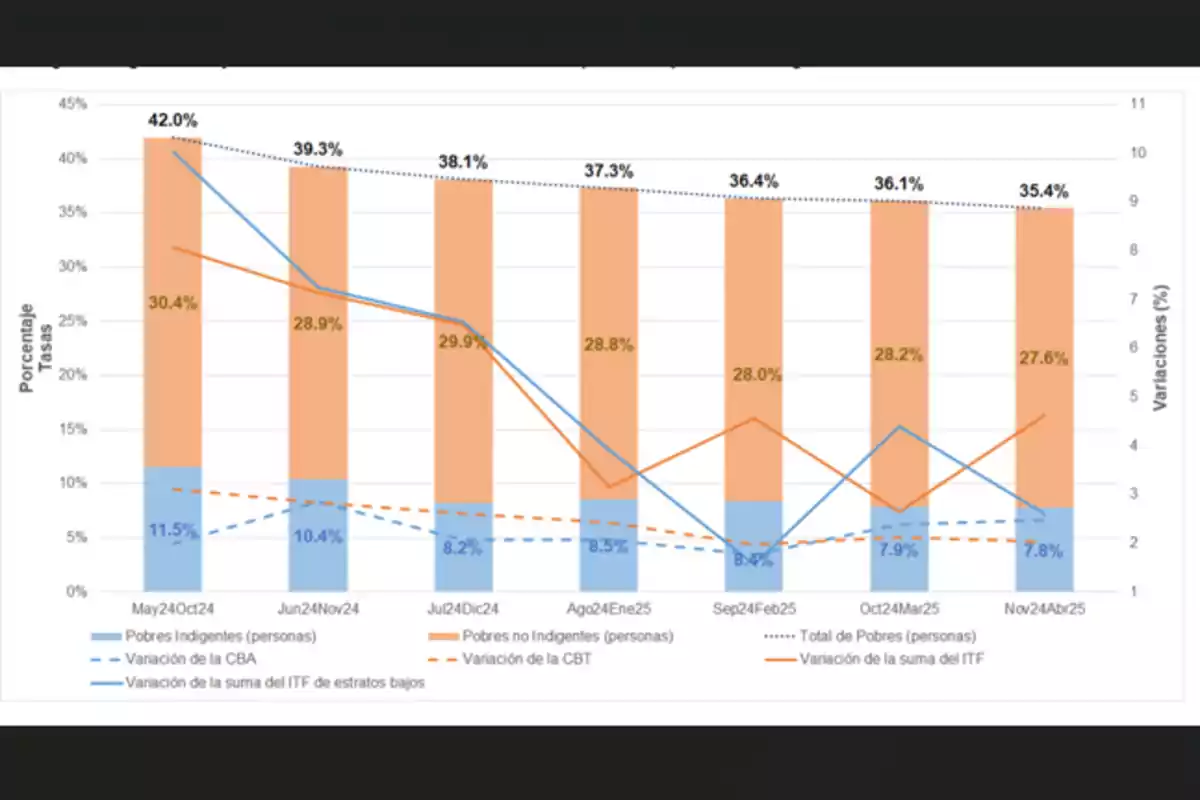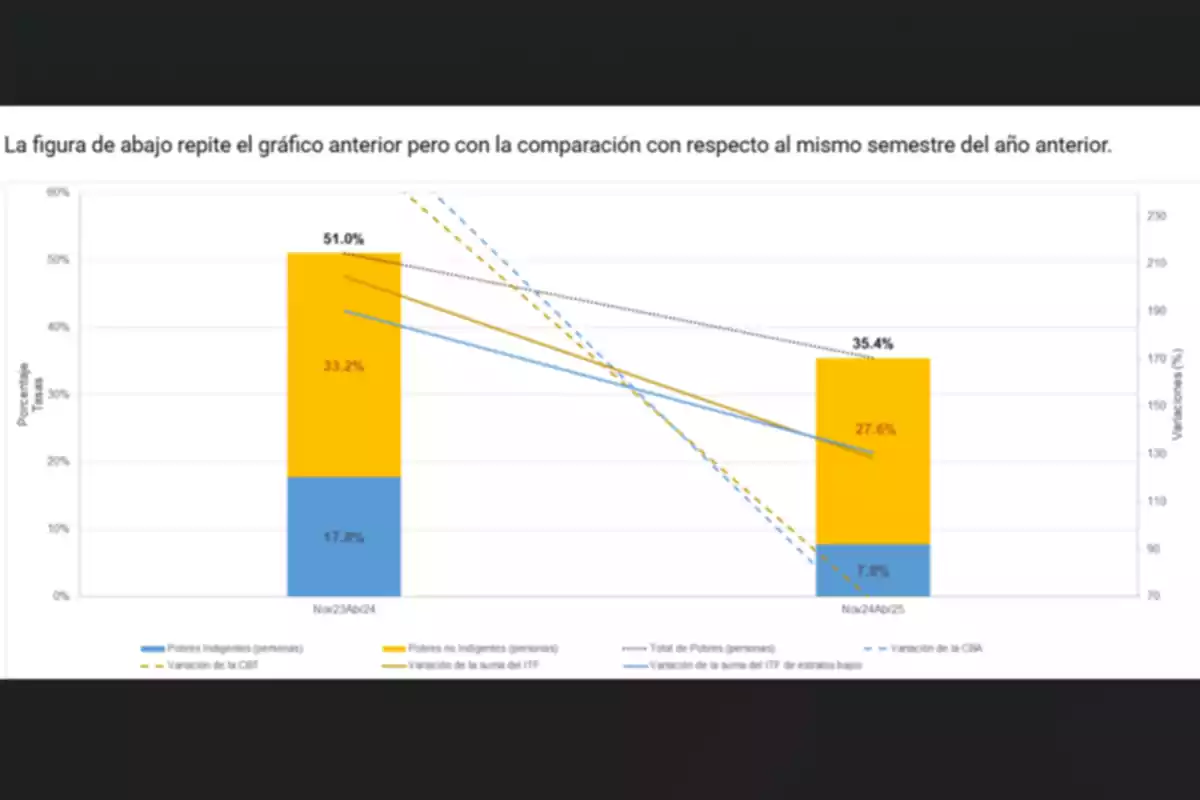
Milei's milestone: poverty and indigence numbers plummet in Argentina
Poverty and indigence plummet while real incomes outpace inflation in Milei's Argentina
In a booming economic context, with a clear direction, statistics are beginning to support the ambitious stabilization plan of the national government. According to the Nowcast of Poverty from Universidad Torcuatto Di Tella, a tool that estimates in real-time the incidence of urban poverty in the country, the poverty rate has drastically reduced in recent semesters, in a trend that consolidates the U-turn driven from the Casa Rosada.
The latest estimate for the semester November 2024 - April 2025 projects a poverty rate of 35.4%, with a 95% confidence interval between 33.9% and 36.9%. This implies that approximately 10.5 million people live in poor urban households, out of an estimated total of 29.6 million inhabitants in urban areas. Although still high, this level represents a substantial improvement compared to 51.0% in the same semester of the previous year.

The study—based on projections of the labor market and total family income deciles (ITF) from the Permanent Household Survey (EPH) of INDEC—compares these incomes with the Total Basic Basket (CBT) to estimate the evolution of poverty. For the semester in question, the average CBT in Greater Buenos Aires (GBA) was estimated at AR$ 341,609 per equivalent adult, marking a year-on-year increase of 67.6%. However, the ITF projection shows a jump of 126.0%, which indicates that incomes grew almost twice as much as the inflation of the basic basket, a milestone not reached in years.
This change in the dynamics of income and prices allowed poverty to fall steadily in the last measured periods:
37.6% in November-December 2024
34.4% in the first quarter of 2025
34.3% in April 2025

The report highlights that "in recent months the nowcast projects a decrease in the rate of decline of the poverty rate compared to the drop that occurred during 2024", suggesting that the improvement is consolidated but slowing down, probably due to price stabilization.
This result is not isolated. The drop in indigence is even more pronounced: it plummeted 10 percentage points year-on-year, going from 17.8% to 7.8%, while poverty fell 15.6 percentage points, from 51.0% to the current 35.4%.

The drop is not merely statistical. The report reveals that between the first semester of 2024 and the semester April-September of that same year, poverty fell from 52.9% to 44.9%, a reduction of 8 percentage points mainly attributable to an increase in real per capita family income and an improvement in income distribution. The distributive and growth effect was so strong that it managed to cushion the impact of a CBT that continued to grow.
In technical terms:
The variation of the CBT for the semester November 2024 - April 2025 was 2.0% compared to the semester October 2024 - March 2025.
In that same period, the total ITF sum increased by 2.6%, and for the lower strata (deciles 1 to 4) it increased by 4.6%, far exceeding the price increase.
The Basic Food Basket (CBA)—indicator of indigence—increased only 2.5%, compared to incomes that grew more than double in the most vulnerable households.

Since March-August 2024, incomes began to grow above the baskets, marking the turning point. As the report highlights, "this situation induced a drop in the measurement of poverty and indigence that during the semester November 2024 - April 2025 would have reached 35.4% and 7.8%, respectively."
The statistics confirm what President Javier Milei has been announcing with force: the adjustment fell on politics and not on the people. Meanwhile, the incomes of popular sectors recover and inflation slows down.
More posts: